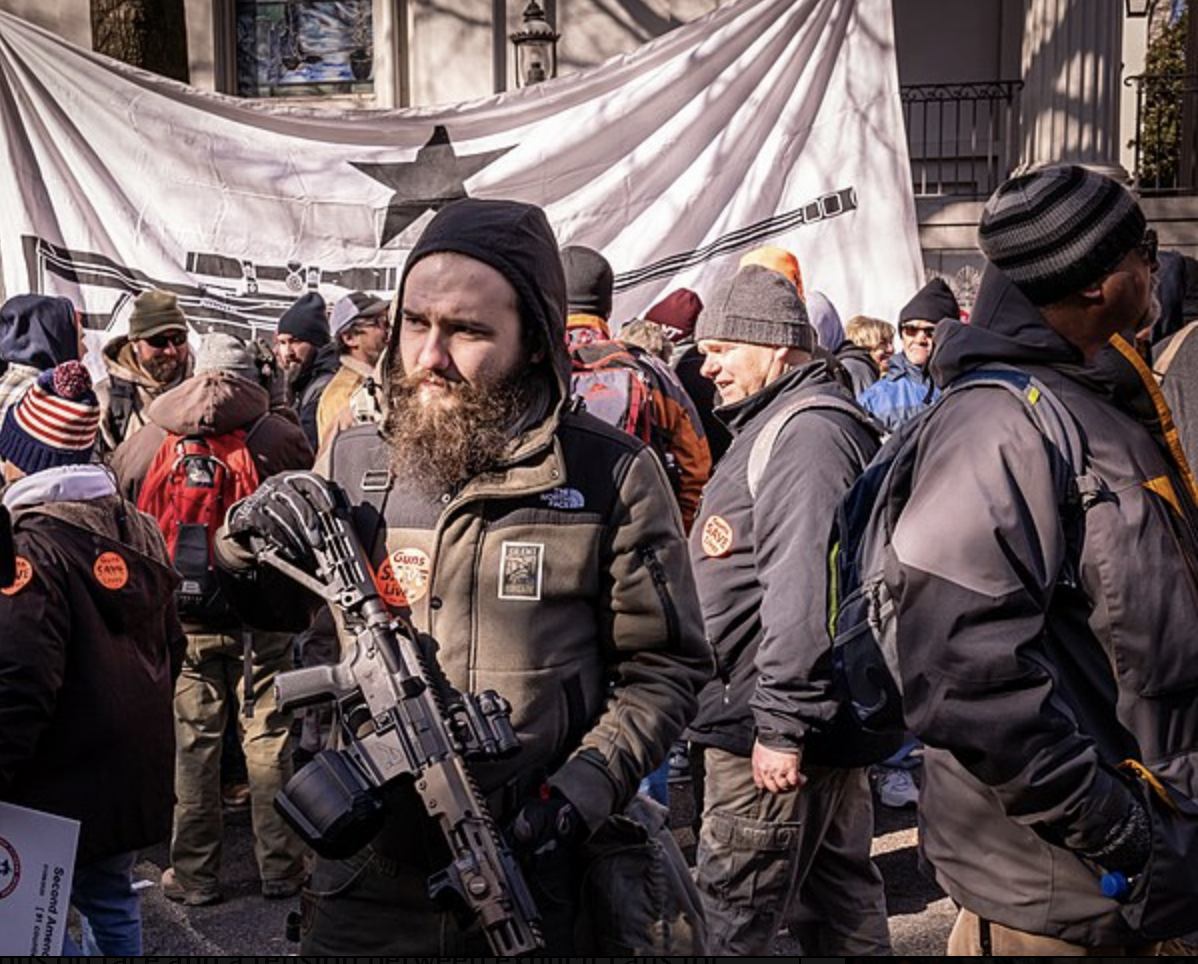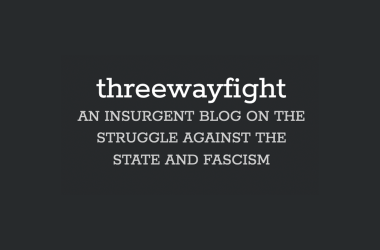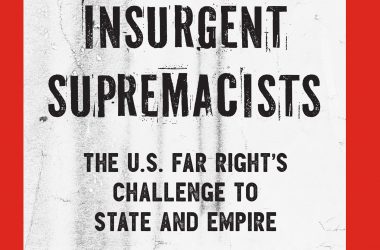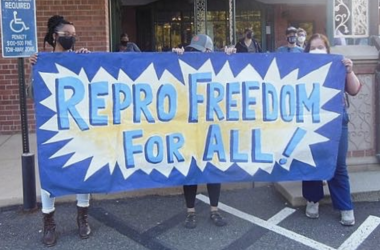By Matthew N. Lyons
Originally posted on Three Way Fight
September 1st, 2020
Trump’s relationship with the far right is just as important in 2020 as it was in 2016, but the character of the relationship has changed dramatically.
I’ve been revisiting the articles I wrote about Trump during the 2016 presidential campaign, taking stock of what’s the same and what’s different, as a way to get some perspective on what we’re facing now.
One key piece of the picture is Trump’s relationship with the forces of the U.S. far right, by which I mean those rightists who are fundamentally disloyal to the existing political order, because they want to replace it with something even worse. In the 2016 campaign, Trump had a symbiotic relationship with the far right that was unprecedented—unlike anything any major party candidate had ever had in U.S. history as far as I can tell. The relationship was centered particularly on the Alt Right, which played an important role in helping the Trump campaign, particularly in the primaries but also in the general election, through its effective and innovative use of social media to attack Trump’s opponents. In return, the Alt Right got a lot more visibility and recognition and validation by having this connection with a rising and ultimately triumphant political figure.
Looking at the current situation, it’s still true that Trump has an unprecedented symbiotic relationship with far right forces, but the specifics and the character of that relationship have changed.
In 2016 the Alt Right was the far right’s most dynamic sector. After the election, they declared themselves to be the vanguard of the Trump coalition, and in 2017 they made a big push to capitalize on their success and create a broader, militant street-fighting coalition of right-wing forces. The push failed and the Alt Right suffered a dramatic decline. The murderous Unite the Right rally in Charlottesville exposed the brutality at the core of their politics for everyone to see. That setback—followed by a strong counter-mobilization by antifascists, deplatforming by media companies, and a series of internal conflicts—left the Alt Right much weaker and more isolated. Since the end of 2017, the alt-right has had little capacity to mobilize much of anything.
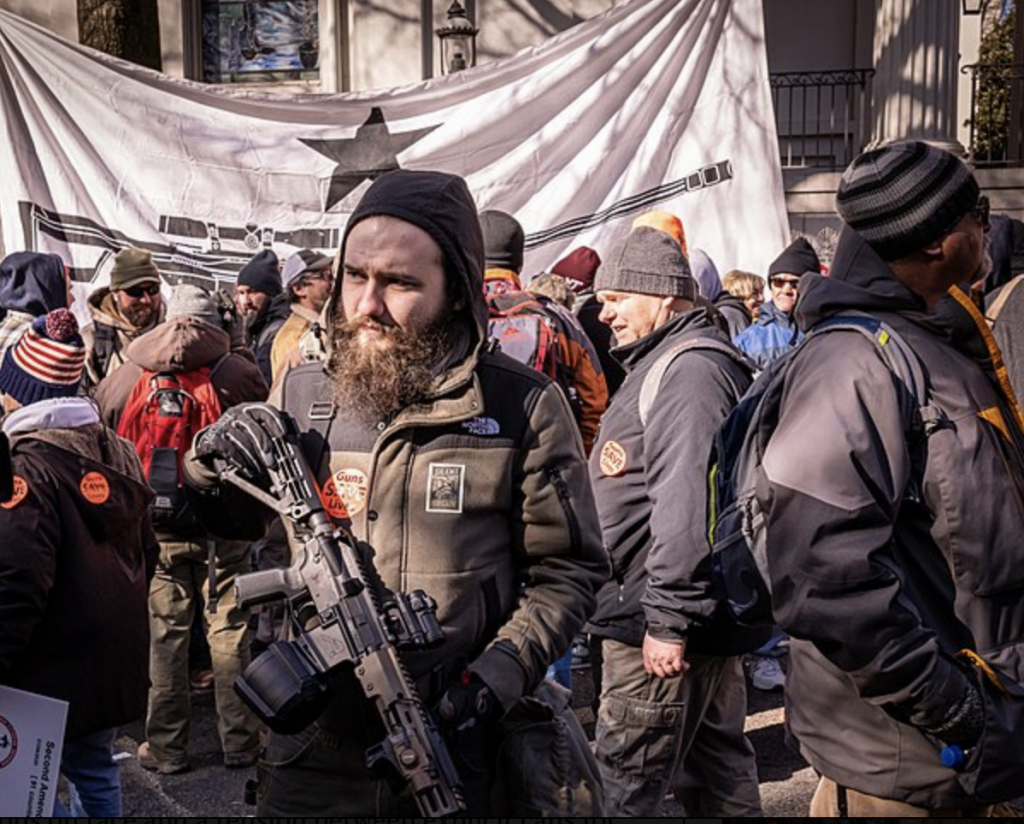
movement’s ability to put thousands of people in the streets.
Today, the most dynamic sector of the far right is the Patriot movement—the
people who brought you citizen militias, conspiracy theories about
globalist elites, and a militarized ideology of individual property
rights. Unlike the Alt Right, which is white nationalist (meaning they
literally want an all-white nation), the Patriot movement has always
encompassed a range of positions on race
and a tension between explicit calls for white dominance and what’s
been called “color-blind racism”—the ideology that protects racial
oppression by denying it exists.
The Patriot movement was probably a lot bigger than the Alt Right in
2016, but it was relatively quiet after the collapse of the Malheur Wildlife Refuge occupation
early that year. By contrast, 2020 has seen a series of political
mobilizations with politics much closer to Patriot ideology than to Alt
Right white nationalism, notably the gun rights rally in Richmond, Virginia, back in January and the anti-lockdown protests
in April in May. So while the Alt Right in 2016 made powerful use of
Internet memes and online harassment campaigns, the Patriot movement in
2020 has demonstrated a capacity to put hundreds, thousands, or even
tens of thousands of people in the streets in cities across the country,
which the Alt Right was never able to do.
It’s not just that a different branch of the far right is on the upswing
now compared with 2016. It’s also that the Patriot movement has
developed a different relationship with Trump and with the established
political system than the Alt Right has had.
In 2016, most Alt Rightists supported Trump enthusiastically, but they
were always clear that he wasn’t one of them. They said: Trump doesn’t
share our politics, but he is useful to us; he’s creating openings for
us to promote our message, he’s attacking a lot of our enemies—including
the conservative establishment—and he’s buying time for the radical
changes we need. The Alt Right saw Trump’s anti-immigrant and
Islamophobic politics as slowing down the supposed process of “white
genocide,” but they never expected him to dismantle the United States or
create a whites-only society. And as his administration went on, many
Alt Rightists were deeply disappointed
by what they saw as Trump’s betrayal of his America First promises and
his capitulation to establishment conservatism. You see this shift most
starkly in the Occidental Dissent blog, where Alt Rightist Brad
Griffin (“Hunter Wallace”) once supported Trump but now writes about him
with loathing and contempt.
The Patriot movement doesn’t call for a white ethnostate, but it has
developed its own ways of delegitimizing the existing political system,
such as claiming that local governments can veto or ignore federal laws,
and even creating new bodies, such as “common law courts,” that claim
to have legal authority. In 2014, hundreds of Patriot activists with
guns successfully faced down
a large contingent of armed federal officers at Cliven Bundy’s Nevada
ranch in a dispute over Bundy’s refusal to pay grazing fees on federal
lands. It’s hard to think of another instance of armed rightist defiance
of the U.S. government on that scale since federal troops went after
the Reconstruction-era Ku Klux Klan in the 1870s.
Yet the Patriot movement has, with exceptions, been more staunchly and
consistently supportive of President Trump and his efforts to expand
federal policing than the Alt Right ever was. Patriot activists engage
in ideological gymnastics that dismiss undocumented immigrants,
refugees, and leftist protesters as tools of a sinister elite conspiracy
to impose world government. This framework enables them to rationalize
support for Trump’s repressive measures as defense of a populist upsurge
against an elite-sponsored campaign to suppress it.
In December 2015, I suggested
that one way to read Trump’s friendly relationship with much of the far
right was that “Trump’s campaign is co-opting far rightists into, if
not renewed loyalty, at least suspending their disloyalty to the
existing political order.” That cooptation has had limited effect on Alt
Rightists and other white nationalists, but it’s had a strong pull for
the Patriot movement.
So it’s not surprising that Patriot activists—associated with Three
Percenters, Oath Keepers, militias, and related groups—have played a
major role in the wave of vigilante repression that’s crashed over Black
Lives Matter protests this year. Bolstering brutal police crackdowns, armed far rightists have dogged BLM demonstrations
hundreds of times in 2020. Since George Floyd’s murder in late May,
right-wingers have physically attacked protesters over 100 times, and
have killed at least three people. Urged on by racist cops and Trump’s
“law and order” rhetoric, these activists have been functioning
implicitly or explicitly as vigilantes helping the police to crack down
on radical dissent.
Previous right-wing mass killers such as Dylann Roof (Charleston, 2015) or Patrick Crusius (El Paso, 2019), have generally framed their violence in terms of white nationalist or neonazi ideology. But Kyle Rittenhouse,
who murdered two protesters in Kenosha last week, says he is a member
of a local militia protecting local businesses and is almost a
caricature in his adoration for the police. Also unlike Roof or Crusius,
Rittenhouse has been endorsed by figures such as Tucker Carlson and Trump himself.
It’s true that some of the recent vigilantes have been white
nationalists, but white nationalists have tended to be ambivalent on
whether to support cops or not,
while Patriot groups have rallied to them more consistently. Closely
aligned with Patriot groups have been the Proud Boys, a misogynistic
organization that is “western chauvinist” but multiracial,
and that has consistently tried to position itself as vigilante allies
of the police, as well as Patriot Prayer, a northwest regional group
with politics similar to the Proud Boys.
If internet activism was the linchpin of Donald Trump’s symbiotic
relationship with the far right in 2016, physical violence and
harassment play that role today. Whether they intimidate Black Lives
Matter protests or intensify them, far right vigilantes dramatize
Trump’s claims that extraordinary measures are needed to combat
lawlessness. In return, his fearmongering offers Patriot activists and
other paramilitary rightists validation, increased attention, and
political focus.
Vigilante repression as an adjunct of state power is nothing new—it’s
been integral to the United States from the beginning. For most of U.S.
history, the state repressive apparatus was relatively small, and the
people in power relied heavily on non-state forces of armed white men
to keep subject populations—Indigenous, Black, Mexican, and
Asian—terrorized and under control. During the key period of
industrialization from the 1870s to the 1930s, capitalists also relied
heavily on private armies such as the Pinkerton Detective Agency to
intimidate, beat, or kill workers who tried to organize unions or go on
strike. As recently as the 1970s, federal security agencies sponsored
right-wing vigilante organizations such as the Legion of Justice and
the Secret Army Organization to spy on, vandalize, and physically attack
leftists. In 1979, an undercover agent of the U.S. Bureau of Alcohol,
Tobacco and Firearms helped to plan the operation that resulted in the Greensboro massacre, in which a coalition of Klansmen and Nazis murdered five leftists at an anti-Klan rally.
Overall, however, vigilante repression has tended to decline over the
past half century or more, as traditional outfits such as the Ku Klux
Klan became a liability to the ruling class, large sections of the white
supremacist movement abandoned loyalty to the state for white
nationalism, and the state’s own repressive apparatus has become much
bigger and more powerful. But now we’re seeing a new push to bring back
vigilante repression alongside the modern security state.
Today’s resurgence of right-wing vigilantism is unstable and
conditional, because it’s driven by a situation of unprecedented
volatility. On one side, we have a wave of protests, uprisings, and
strikes against police violence and white supremacy beyond anything the
U.S. has seen in decades. On the other, we have a president who promotes
supremacist politics, routinely subordinates governmental functions to
his own personal interests, and both threatens and celebrates violence
against his opponents. Armed Patriot activists and some other far
rightists are rallying to the police partly because they’re afraid of
Black-led working class revolt, and partly because, despite
reservations, they still see Trump as a populist leader at war with
entrenched elite power. Their de facto loyalty to the system could shift
into support for efforts to keep Trump in power by extralegal means, or
armed opposition if they give up on Trump* or he leaves office. A coup
attempt or a civil war—I’ll discuss these dangers in a follow-up post.
Note:
* Highlighting that Patriot movement support for Trump is not a given,
Oath Keepers, one of the most prominent Patriot groups, recently tweeted,
“We’ll give Trump one last chance to declare this a Marxist
insurrection & suppress it as his duty demands. If he fails to do
HIS duty, we will do OURS.”
Photo:
By Mobilus in Mobili, CC BY-SA 2.0, via Wikimedia Commons.
Matthew N. Lyons has been writing about right-wing politics for over 25 years. His work focuses on the interplay between right-wing movements and systems of oppression, and responses to these movements by leftists, liberals, and the state. He writes regularly for Three Way Fight, a radical antifascist blog, and his work has also appeared in the Guardian, New Politics, Socialism and Democracy, teleSUR, Upping the Anti, and other publications.
Lyons contributed the title essay to the book Ctrl-Alt-Delete: An Antifascist Report on the Alternative Right (Kersplebedeb Publishing, 2017). He is coauthor with Chip Berlet of Right-Wing Populism in America (Guilford Press, 2000) and author of Arier, Patriarchen, Übermenschen: die extreme Rechte in den USA (Aryans, Patriarchs, Supermen: The Far Right in the USA [Unrast Verlag, 2015]).
Lyons is cotrustee of the Lorraine Hansberry Literary Trust, which stewards the literary legacy of the late playwright and activist Lorraine Hansberry.

